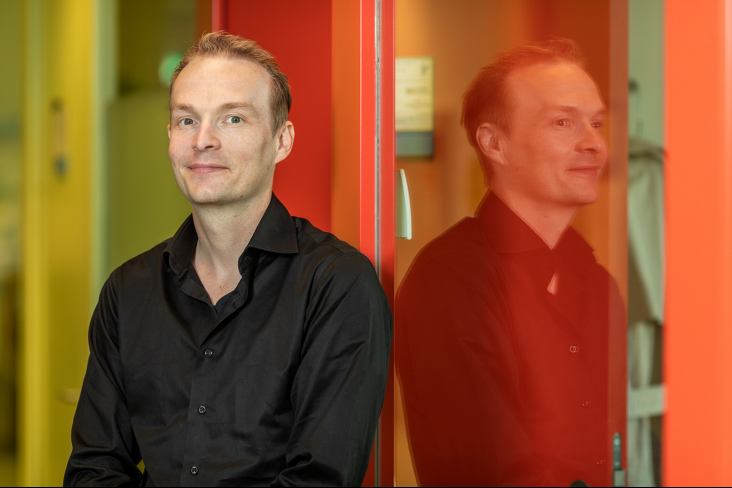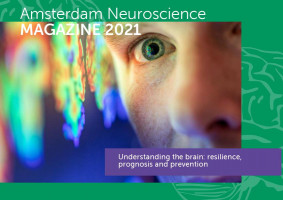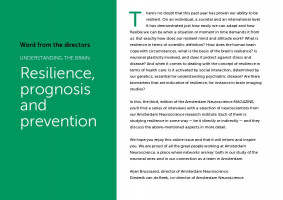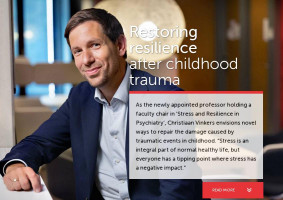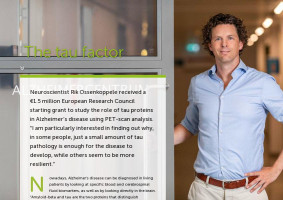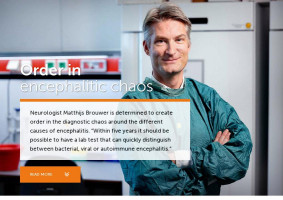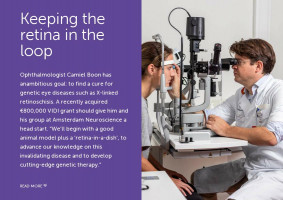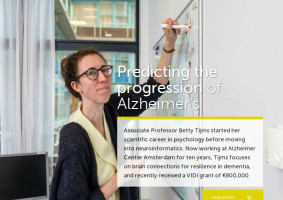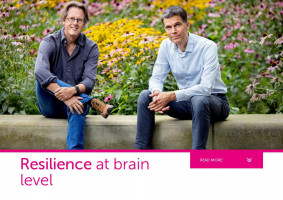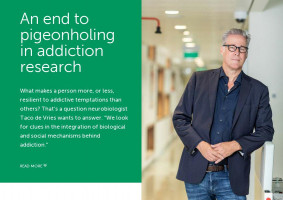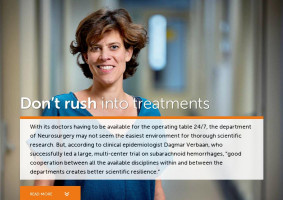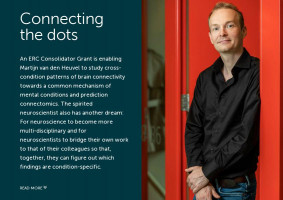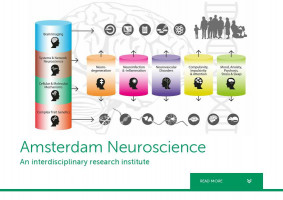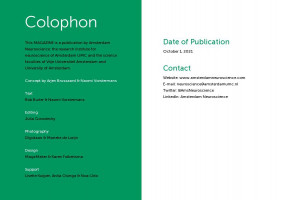An ERC Consolidator Grant is enabling Martijn van den Heuvel to study cross-condition patterns of brain connectivity towards a common mechanism of mental conditions and prediction connectomics. The spirited neuroscientist also has another dream: For neuroscience to become more multi-disciplinary and for neuroscientists to bridge their own work to that of their colleagues so that, together, they can figure out which findings are condition-specific.
Read More
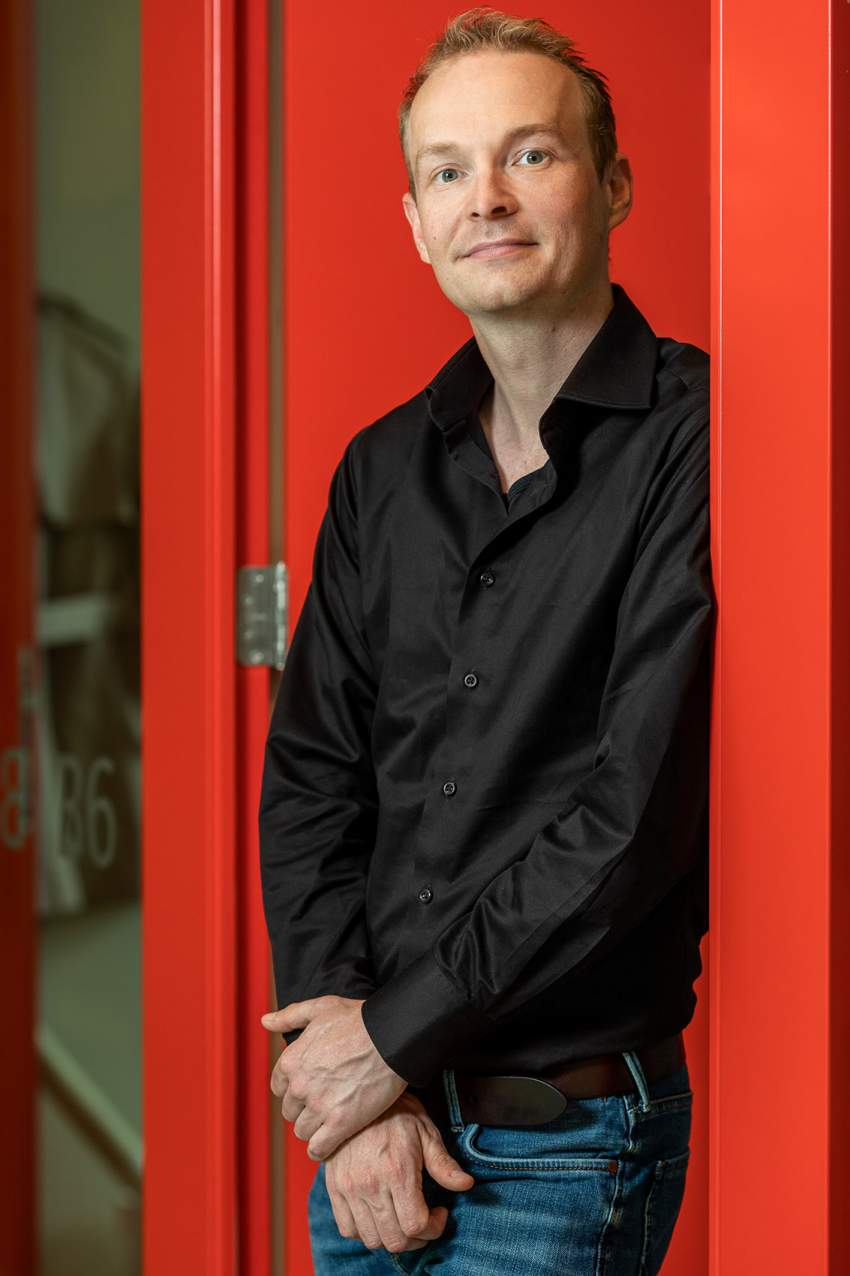
As one of the pioneers in the field of connectomics, Martijn van den Heuvel, professor in the field of Computational Neuroscience, studies the human brain from a network perspective. With the use of MRI techniques, he maps connections one by one and converts them into a network: the road map of the brain. “We work across several disciplines, such as mathematics, informatics, psychology and medicine,” he explains. “What I find fascinating is the differences we see with regards to the level of behavioral change caused by brain alterations. Sometimes a small deviation can cause lots of behavioral changes, and sometimes large deviations have hardly any effects. This gives rise to the questions: How does brain organization relate to behavior and cognition? And how do people with a high genetic risk or who are exposed to certain environmental factors refrain from developing certain expected disorders?”
Studying the data
Van den Heuvel notices there is a tendency to study new datasets, even though there is already a lot of generated data available. “We know comorbidities exist in mental health disorders, which sometimes might be due to genetic overlap,” he says. “But when it comes to brains, we don’t know the similarities or differences between disorders. So I wonder: Can we draw on the data already available to learn more about disease A, if we know the effects of diseases B, C and D?”
Building bridges
The promising potential of this transdiagnostic approach inspires Van den Heuvel and his team at the Connectome lab at the Center for Neurogenomics and Cognitive Research greatly. Being able to generate a personal road map of the brain and compare connectomes stimulates them to compare the datasets of different patients and their various disorders. With his €2 million Consolidator Grant from the European Research Council, Van den Heuvel hopes to be able to further develop analysis techniques for studying and comparing these connectomes. “Now is the time to pool and compare data,” says Van den Heuvel, who is a staunch advocate for transdiagnostic research. “We need to know why so many disorders involve changes in the same brain regions… And how connectome effects relate across disorders and mental conditions.”
Something in common
To answer these questions, Van den Heuvel says they need to identify a common denominator first. “If we find that, we then want to study the underlying development path of the connections playing a role in disrupting the brain’s functions. We want to identify the circuits of the brain that play a role in a wide range of brain conditions. That’s where the field of genetics comes into play. Identifying combined genetic and brain risks may be a new avenue for new diagnostics, treatment or preventive measures.”
Resilience vs. vulnerability
“Being able to map and compare the individual connectome is valuable when you are on the hunt for underlying causes of disorders, looking for the brain’s vulnerability,” continues Van den Heuvel. “We want to relate connectivity vulnerabilities with genetic vulnerabilities to understand if certain connections are more robust or sensitive to disruption. In a similar way, investigating the brain’s resilience teaches us about the defensibility aspects of brain connections. This research field is on the rise, both in basic science as well as in clinical settings. Vulnerability and resilience may not just be each other’s opposites, but also related concepts and part of the same spectrum.”
Interdisciplinary enthusiasm
Van den Heuvel argues that resilience relates to flexibility. “Within boundaries, our brain is adaptive and can adjust to new situations and environments; we have all experienced its flexibility in the past 1.5 years. I’m a believer of a healthy lifestyle contributing to our resilience factor, both on our brain functioning as well as our neuroanatomy.” When it comes to our resilience, the flexibility theory has been firmly tested during the pandemic. For Van den Heuvel, his enthusiasm helped too. Which, during the lockdowns, delivered a whole new twist to the term ‘bringing work home’.
Photography: Marieke de Lorijn
